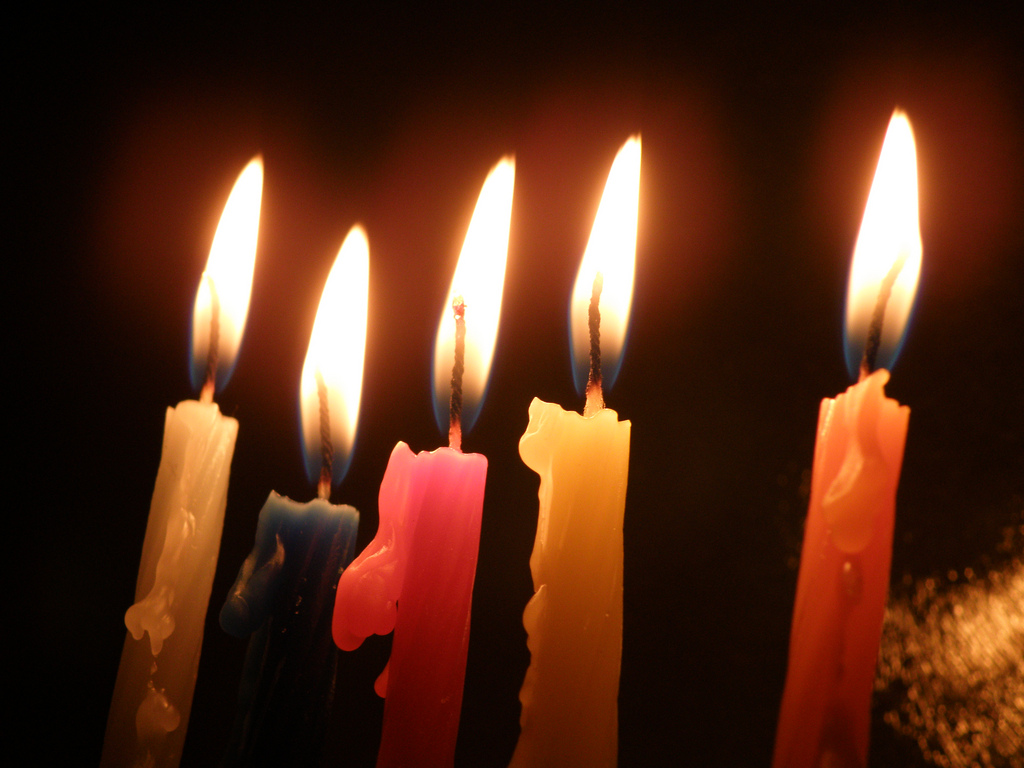Chanukah
Our Sages have written much about the lighting of the Menorah: Which oils to use, where the Menorah should be placed, and of what materials we should fashion the Menorah, for example. One lesson found (Sofrim 20:3) concerns the type of Menorah to be used: It is forbidden to use an old lamp. “Old,” according to most commentators, means in a condition that renders the Menorah unattractive, such as used, unglazed earthenware. The lighting of the Menorah is a celebratory Mitzvah, and should therefore be performed in a respectful and honorable manner. The use of an old and unappealing Menorah does not accord to this Mitzvah the respect that is due.
The B’nai Yisaschar has another explanation of the prohibition on using an old Menorah, on an allegorical level. The nation of Israel has been the grateful recipient of many of G-d’s miracles. For the leader Yehoshua (Joshua) alone, the sun stood still during a battle and the walls of Jericho fell. Clearly, we do not commemorate all these miraculous occurrences for generations as holidays. We do, however, commemorate miracles on two holidays that are not mentioned in the Torah: Chanukah and Purim. There are different types of miracles. For some, the “light of G-d” that is evident when a miracle occurs appears only at that particular point in time. However, G-d performs some miracles with an added level of affection for the nation of Israel. The “light of G-d” emanating from these miracles not only appears at the time of the miracle’s appearance. It is evident each year, at the time of the anniversary of the miracle. These miracles are commemorated as holidays.
Megillas Esther, which is read on the holiday of Purim, comes with its own set of relevant laws and customs. One of these laws is that we cannot read the Megillah backwards. This law, explained allegorically, is that we cannot read the Megillah looking only toward the past. We cannot read the Megillah as merely a recitation of long ago events, a history lesson of sorts. When one reads the Megillah, one has to recognize that each year, Purim and the miracles that it celebrates are relevant in this day and age. G-d’s presence, His light, is apparent on Purim, each year. If one reads the Megillah without making it relevant to this day and age, looking at it as merely a story from days of old, one cannot fulfill the Mitzvah of reading the Megillah.
Chanukah does not have a Megillah that is read on the holiday detailing the events leading up to the miracle. Chanukah merely has the kindling of the Menorah. The lights commemorate the miracles that occurred to the Maccabees: that a small flask of oil lasted for eight days, and that they were victorious in their battles with the Syrian-Greeks. If one lights an “old Menorah,” a lighting considered just another antiquated ritual commemorating some ancient happenings, the lighting is improper. The lighting of the Menorah has to be done with the perspective that the hand of G-d seen at the time of the miracle of Chanukah is seen today as well. G-d’s light shines in the world today just as it did in the days of the Maccabees. The lighting has to be a lighting for the present, a “new” lighting, not a lighting for the past, an “old” lighting.
Why is it that these two holidays, Purim and Chanukah, are celebrated nowadays? Why were the miracles on these holidays so special that the light of G-d seen in conjunction with these miracles is still seen today? The Mishna Berura (670:2:6) explains the difference between Purim and Chanukah. By Purim, the decree against the Jewish people was for the physical destruction of the entire nation. However, the nation gathered to pray, study, and repent and they were therefore spared. By Chanukah, there were physical persecutions. However, the purpose for this persecution was to pressure the Jewish people into relinquishing Judaism in favor of the religion the Syrian- Greeks advocated. If the people had succumbed to the pressure, the persecution would have stopped. However, the people fought for their religion and won. These two holidays represent two different types of salvation: physical destruction thwarted by spiritual endeavor, and spiritual destruction thwarted by physical endeavors. G-d’s hand was evident in both types of salvation, and is evident in each generation when the Jewish people are confronted with spiritual and physical persecutions. These two holidays represent two different types of danger the Jewish people have faced. They represent two different types of dealing with these dangers. And in both instances, because the dedication of the Jewish people to G-d was steadfast, His light was evident and we, via miracles, were saved.
Today, and in every generation, the Jewish people are faced with trials and tribulations. Chanukah and Purim are living lessons that we can and we will persevere. G- d is with us and His divine assistance is forthcoming. On both holidays, we must make the connection between the history of the holiday and its current application. We must take note that the light of G-d that shone in the days of Chanukah and Purim still shine today. We must light a new Menorah and read the Megillah forwards. An “old” Menorah and “backward” Megillah readings just do not work. May the light of our new Menorahs shine brightly on the entire nation this year!
Text Copyright © 2005 by Rabbi Yehudah Prero and Torah.org.
The author has Rabbinic ordination from Mesivta Tifereth Jerusalem, NY.


